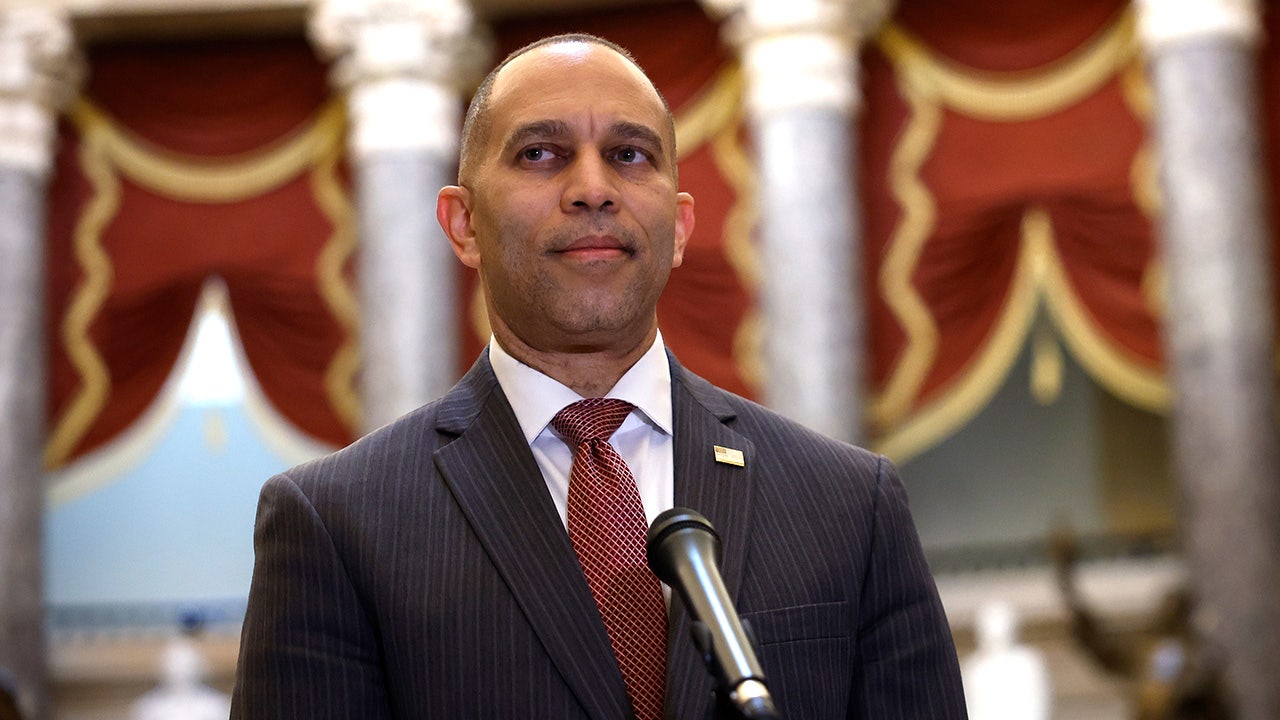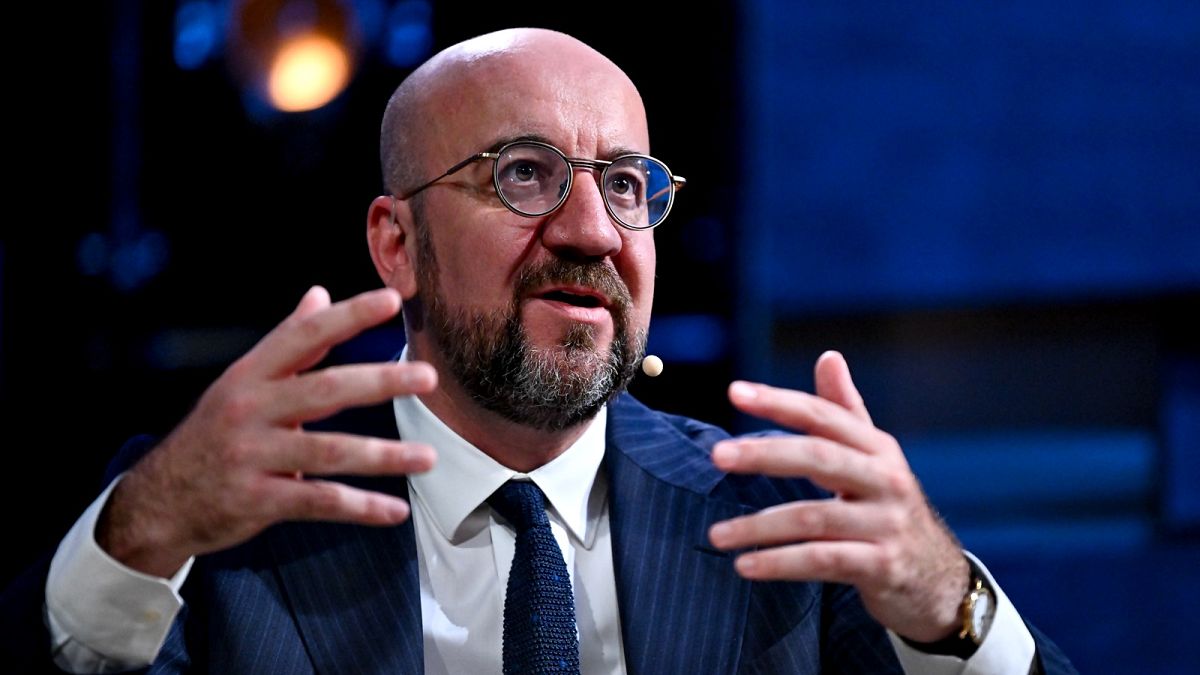Health
The Collateral Damage of A.D.H.D. Drug Shortages

In the spring, Riana Shaw Robinson learned that her 11-year-old son, Madison, had sprinted out of class to chase a squirrel through his school’s courtyard in Berkeley, Calif.
It’s not how her sixth grader would typically behave. But that day Madison hadn’t taken his Adderall — the medication that, in his words, helps his brain slow down, “from 100 miles per hour — like a car — to 70 miles per hour.”
Ms. Robinson said Adderall worked better for her son than the other medications they had used to treat his attention deficit hyperactivity disorder. With Adderall, he was calmer and better able to focus.
“He actually had a taste for what relief could look like,” Ms. Robinson said.
But for nearly a year now the medication — Madison takes the generic version — has been difficult to find. He has had to skip doses, sometimes for up to two weeks, because nearby pharmacies have been out of stock.
The family is rationing his pills this summer so that Madison, who recently turned 12, will have them during the school year.
“We try to manage with a couple of caffeine drinks during the day and soccer in the afternoons,” Ms. Robinson said, strategies that she said have helped her son regulate his emotions.
In July, the Food and Drug Administration posted more shortages in A.D.H.D medications, adding generic versions of Concerta and two types of Vyvanse capsules to the list. And in August, the F.D.A. and the Drug Enforcement Administration took the rare step of issuing a joint public letter acknowledging the shortage and asking manufacturers to increase production.
A representative from Takeda Pharmaceuticals, which makes Vyvanse, said in an email that a “manufacturing delay, which we are actively working to resolve,” had created a temporary disruption in the supply of certain Vyvanse capsules, adding that “we expect this to continue into September 2023.”
Parents and caregivers across the country are spending hours each month hunting down pharmacies with A.D.H.D. medication in stock and asking their doctors to either transfer or rewrite prescriptions, a process many equate to having a second job. Others pay hundreds of dollars out of pocket for name-brand drugs that are sometimes more readily available but, unlike generics, are not covered by their insurance. Some children end up taking similar but less effective medications or go without medication for months at a time because their families do not have the extra time or cash.
A.D.H.D., which is often characterized by inattention, disorganization, hyperactivity and impulsivity, is one of the most common childhood neurodevelopmental disorders. Because of the medication shortage, children across the country with the condition fell behind in their schoolwork over the spring, and their relationships often suffered as they struggled to regulate their emotions, according to interviews with multiple doctors and parents. Meanwhile, they all wonder: Why is this happening, and when will it end?
‘She couldn’t catch up’
One of the cruelest aspects of the A.D.H.D. medication shortage, some parents have said, has been the collateral damage to their children’s self-esteem.
Kari Debbink, who lives in Bowie, Md., said her daughter, who is about to enter her senior year of high school, would lose motivation to do her school work when her A.D.H.D. medication, Concerta, was not available in either the brand name or the generic version. Her grades, which had typically been B’s, plummeted — and so did her confidence.
“Once she got behind, she couldn’t catch up,” Ms. Debbink said. “By the end of the year, we were just trying to prevent her from failing classes.”
Drew Tolliver, 12, who lives in DeKalb, Ill., typically takes the generic version of Concerta, but since February, his family has had difficulty finding it.
When taking the medication regularly, Drew said, “I felt like I knew myself.”
“I felt like a better me,” he added, “like how ‘myself’ should be.”
His mother Amy Tolliver recently located the medicine — but she had to pick it up 40 minutes away from the gas company where she works 10-hour shifts, six days a week.
In the spring, Drew would refuse to go to class when he didn’t have his medication, said Michelle Tolliver, Amy’s wife and Drew’s second parent. She and Amy sometimes relented and allowed him to stay home.
“I hated to see him feel like he failed,” Michelle Tolliver said.
‘I was on hold for 50 minutes’
Because A.D.H.D. medications are considered controlled substances, patients are required to get a new prescription for each 30-day supply.
“I was on hold for 50 minutes waiting to talk to a pharmacist,” Dr. David Grunwald, a child and adolescent psychiatrist in Berkeley, Calif., said of a recent call to track down A.D.H.D. medication for a child whose mother has a chronic illness and cannot spend hours on the phone.
In his practice, he said, long hold times with large pharmacy chains are becoming the norm.
“It feels like a game where you don’t know which stimulant is going to be in short supply each week or month,” he said. “It’s very frustrating.”
Dr. Kali Cyrus, a psychiatrist with a private practice in Washington, D.C., has had to call pharmacies so often that she is planning to hire someone to help her check availability. Right now she tries to squeeze in calls throughout the day, including in the morning, when she is making breakfast or walking her dog.
In her sessions with patients, she said, she sometimes has to decide “how to combine different strengths or formulations to get my patient their normal dose — or as close as we can,” or switch to another stimulant that is more available.
Changing medications can result in a less effective treatment, doctors say, because certain stimulants work better for some people than others. Even switching from name-brand drugs to generic versions can be problematic. Generic versions of Concerta, for example, may not release their drugs over time in the same way as the original.
Because of the shortage, Paige and Leo, who live in Northern California, are now giving their 7-year-old son, Andy, the drug Metadate, which they say lasts only six hours. (The family asked to be referred to by their middle names to protect their privacy.)
This means that Andy then requires an additional dose in the afternoon, administered during his after-school program. Sometimes the staff would forget, Paige said.
When that happened, “we would get a call like, ‘Your kid’s out of control,’” Leo said.
Demand for stimulants has soared
For children with A.D.H.D. who have trouble functioning in daily life, stimulant medications like amphetamines (Adderall) and methylphenidate (including Ritalin and Concerta), have long been considered the gold standard of treatment by psychiatrists and pediatricians.
“They are one of our most effective treatments in psychiatry — period,” said Dr. Alecia Vogel-Hammen, an assistant professor of psychiatry at the Washington University School of Medicine. “They have been life-changing.”
In recent years, these drugs have been in high demand. The use of prescription stimulants to treat A.D.H.D. doubled from 2006 to 2016. And between the pandemic years 2020 and 2021, the percentage of people who had a prescription filled for a stimulant rose by more than 10 percent among some adults and teens, according to an analysis from the Centers for Disease Control and Prevention.
The growing numbers — and the ease of being evaluated via telehealth — have raised concerns that some people are being misdiagnosed and that stimulants for A.D.H.D. are being overprescribed, or abused by people who do not have A.D.H.D. but who use the drug to be more productive in school or at work. But this is not the case across the board. Studies have found that girls, people of color and those who identify as L.G.B.T.Q. are often underdiagnosed and undertreated for A.D.H.D.
Doctors say demand for A.D.H.D. medications has also risen because of increasing awareness about the condition in both children and adults.
Why is the shortage happening?
The disruption in A.D.H.D. medications mirrors the shortage of hundreds of other types of drugs, including generic forms of chemotherapy, that have fallen victim to a faltering pharmaceutical supply chain.
Typically, drug shortages are tied to a single manufacturing facility, said Michael Ganio, an expert in drug shortages at the American Society of Health-System Pharmacists.
But in this case, according to the F.D.A.’s online drug database, the A.D.H.D. medication shortage now involves several manufacturers — mostly those who make generic drugs — and has been ongoing since the fall of last year. On the F.D.A.’s website, the reasons offered by each manufacturer are sometimes as opaque as “regulatory delay” or “other.” Others say “shortage of active ingredient” or “increased demand.”
Some manufacturers have given specific time frames for when the issues might be resolved, such as “mid-August.” But it is unclear when that will translate to restocked pharmacy shelves.
Because controlled substances have a high potential for abuse, the D.E.A. sets limits on how many of these drugs can be produced. But in 2022, the manufacturers of amphetamine medications produced about 1 billion fewer doses than they were permitted to make, according to government records. They did not fully meet their quotas in 2020 or 2021 either.
When asked for more specifics about which companies were not meeting the quotas or whether any companies had asked to increase their quotas, a D.E.A. official responded that details about each company’s quotas are considered confidential.
“The fact that there’s no information is just that much more frustrating,” Dr. Ganio said.
Emails to the drug manufacturers currently described as having a shortage of A.D.H.D. medications provided little clarity as to when the problems might be resolved. A representative from Teva Pharmaceuticals, which manufactures Adderall, said it was continuing to see “unprecedented demand” that may cause “intermittent delays” but that it planned to produce the full amount of doses it was permitted to make. Granules Pharmaceuticals, which makes the generic equivalent of Adderall XR and Adderall IR, said it had requested to raise its D.E.A. quota.
Another factor potentially driving the shortage: a $21 billion settlement brokered between three pharmaceutical distributors and most states that placed new requirements on pharmaceutical companies to help stem the flow of controlled substances like prescription painkillers. It has resulted in tens of thousands of drug orders being canceled, including those for A.D.H.D. drugs.
“There is a higher level of scrutiny on all controlled-substance ordering by pharmacies,” said Ilisa Bernstein, a senior vice president at the American Pharmacists Association. “It’s created a perfect storm.”
Suzana, who lives in Tennessee and asked to be referred to by her first name to protect her family’s privacy, described the shortage as a “nightmare.”
This year, she said, her 16-year-old son’s extended release generic Focalin became difficult to find. And because they couldn’t get it consistently, his fourth quarter played out like a “roller coaster.”
“One week he will have a 100 in the class and next week multiple zeros,” she said.
Over the summer, Suzana said, he was on and off his medication so they could save his pills for the school year, which began Monday. That meant she would have extra time to find a refill for his medication.
“This morning I actually counted pills to see how many he had left,” she said.
Now that her son has his driver’s license, she plans to limit his driving, but she worries: “If he doesn’t take a dose and he drives — will he be OK?”

Health
Cruise ship's concerning conditions exposed after vessel fails surprise health inspection

A Jimmy Buffett-themed cruise ship promising customers “paradise” was given a failing grade by health officials earlier this month.
Margaritaville at Sea Paradise fell short during an unexpected health inspection from the Centers for Disease Control and Prevention (CDC) May 1. The examination was conducted by Vessel Sanitation Program (VSP) officials.
The incident report, available on the CDC’s website, shows the ship was given a failing score of 83. An 86 is needed to pass.
One of the complaints listed was the ship’s whirlpools, designed to hold a maximum of four people, had six bathers.
MOTHER’S CARNIVAL CRUISE ENDS IN DRAMATIC MEDEVAC AFTER SON ‘DIDN’T SEEM OK’
Margaritaville at Sea Paradise failed an unexpected health inspection May 1. (Getty Images)
The report also highlighted some sanitation concerns involving food and drink on the cruise.
An investigator was also concerned about whether a crew member had washed his hands while working with food.
“The gloves worn by the crew member handling the ice making components of the ice machines were stored with tools,” the report said. “It was unclear if the crew member washed his hands before putting on gloves. There were glove boxes for food handlers on the bulkhead next to the ice machines that could be used instead.”
CRUISE SHIP FALL LEFT VIRGINIA WOMAN FEARING ‘SHE WAS GOING TO DIE’ IN A FOREIGN HOSPITAL, DAUGHTER SAYS
Water bottles were also found “stored on soiled pallets,” the investigator found, while food preparation areas were also found to be soiled and/or poorly lit. Another crew member was unable to “demonstrate competency” about chemicals to clean lettuce.
“The crew member washing lettuce heads and immersing them in an antimicrobial solution for fruits and vegetables could not demonstrate competency in verifying the concentration of the chemical used,” the CDC said. “The crew member could not use a test strip correctly to verify the concentration of the solution and did not know what an acceptable test result would be.”

Vessel Sanitation Program officials found the Margaritaville at Sea Paradise ship committed some food safety violations. (Margaritaville at Sea via Facebook)
The CDC also noted that a freezer, several refrigerators and multiple deep fryers were all out of service.
A spokesperson representing Margaritaville at Sea told Fox News Digital “immediate corrective actions” were taken after the inspection.
“Following internal policies, immediate corrective actions have been taken to address the issues identified in the inspection,” a statement said. “Many of these issues have already been resolved, and we will be working with USPH [United States Public Health] for a re-inspection as soon as possible.
“We expect this re-inspection will exceed USPH standards.”

A spokesperson representing Margaritaville at Sea told Fox News Digital it is working to remedy the situation. (Margaritaville at Sea via Facebook)
Fox News Digital reached out to the CDC for additional comment but did not hear back.
Health
Health care costs up to 300% higher for privately insured patients than those with Medicare, report reveals

Most Americans — more than 65% — have private health insurance, but a new report has revealed a potentially very expensive drawback.
Patients who have private (commercial) coverage may end up paying significantly more for their medical care compared to those who have public health insurance, such as Medicare, according to recent data from RAND Corp. in Washington, D.C.
As of 2022, employers and private insurance companies paid an average of 254% more for medical services than what Medicare programs would have paid.
HEALTH CARE COSTS UP TO 300% HIGHER FOR PRIVATELY INSURED PATIENTS THAN THOSE WITH MEDICARE
Several states — California, Florida, Georgia, New York, South Carolina, West Virginia, and Wisconsin — had medical costs that were more than 300% higher than Medicare prices, the report stated.
The researchers analyzed medical claims data from a “large population” of privately insured patients who were treated at over 4,000 hospitals across the country between 2020 and 2022.
Patients who have private coverage may end up paying significantly more for their medical care compared to those who have public health insurance, such as Medicare. (iStock)
The report also included the names and prices of each hospital.
“Calculating 4,000-plus U.S. hospitals’ overall relative prices has never been done before this study, because it’s so difficult to collect the requisite data and to get permissions to publish the hospital and health system names associated with each relative price,” said Brian Briscombe, a health care analyst at RAND and one of the study authors, to Fox News Digital.
AS CHOLERA CASES RISE WORLDWIDE, HEALTH OFFICIALS SOUND ‘CONCERNING’ ALARM ABOUT VACCINE SHORTAGES
“This is real price transparency — naming the hospitals and presenting their overall relative prices in a way that anyone could understand.”
The report gives employers a tool they can use to become “better-informed purchasers” of health care services, Peter Hussey, director of RAND Health Care in Santa Monica, California, noted in a news release.
“Hospitals account for the largest share of health care spending in the U.S., so this report also provides valuable information that may aid policymakers interested in curbing health care costs,” Hussey also said in the release.

The researchers analyzed medical claims data from a “large population” of privately insured patients who were treated at more than 4,000 hospitals across the country between 2020 and 2022. (iStock)
The wide variance of prices across hospitals is the most important takeaway, according to Briscombe.
“Within a single city, you can find a hospital that (on average across all its services) charges privately insured patients about twice as much as Medicare charges for those same services — but down the street, another hospital charges three times what Medicare charges,” he told Fox News Digital.
The difference in prices cannot be explained by differences in quality, he added.
“This is real price transparency — naming the hospitals and presenting their overall relative prices in a way that anyone could understand.”
Dr. Brett Osborn, a Florida neurologist and longevity expert, was not involved in the RAND study but said the findings are “concerning.”
“Hospitals bill private insurers multiples of the Medicare allowable,” he told Fox News Digital.
“The elevated costs are passed onto patients, resulting in higher premiums and out-of-pocket expenses.”

As of 2022, employers and private insurance companies paid an average of 254% more for medical services than what Medicare programs would have paid, according to a new study. (iStock)
And these costs are on the rise, Osborn warned.
“People accept job offers because the employer offers health insurance — otherwise, for many, the premiums would be unaffordable,” he added.
Osborn emphasized the significant price variations among states.
SOME PATIENTS WHO SEE FEMALE DOCTORS COULD LIVE LONGER, STUDY SUGGESTS: ‘HIGHER EMPATHY’
“Hospitals in some states charge less than 200% of Medicare rates, while others exceed 300%,” he said.
“Due to its size, Medicare can negotiate lower payments — but private insurers lack this leverage.”
“This discrepancy is due to some hospitals’ market power, making it hard for employers to avoid them. Due to its size, Medicare can negotiate lower payments — but private insurers lack this leverage.”
The doctor also called for greater price transparency from hospitals.

The new report published the names and pricing models of more than 4,000 U.S. hospitals. (iStock)
“Despite a federal rule for price transparency, only 24.5% of hospitals comply — highlighting the need for informed health care purchasing and policy changes to manage costs,” he said.
“The system is fundamentally flawed, designed to profit from illness rather than promote health,” Osborn continued.
“It clearly favors hospital systems, not the patients, reinforcing the harsh reality: There is money in the sick.”
HEALTH CARE IS ‘OVERWHELMINGLY COMPLEX’ FOR OLDER ADULTS, EXPERTS SAY: ‘EVER-INCREASING HURDLE’
Dr. Marc Siegel, clinical professor of medicine at NYU Langone Medical Center and a Fox News medical contributor, said the issue of price variations is complex.
“Sometimes these are hidden costs, and sometimes hospitals and other health organizations know they can get away with charging private insurers more while obscuring prices from both the insurer and the patient to help compensate for the shrinking reimbursements from public insurances,” Siegel told Fox News Digital.
“At the same time, more out-of-pocket costs are transferred to the consumer in terms of copays and deductibles, as middlemen take the profits.”
“The system is fundamentally flawed, designed to profit from illness rather than promote health.”
With the lack of price transparency, there is no way to introduce competition, Siegel said, as the true costs and prices are hidden.
The study did have some limitations, the researchers acknowledged.
CLICK HERE TO SIGN UP FOR OUR HEALTH NEWSLETTER
“We didn’t have sufficient claims data to publish all U.S. hospitals’ relative prices,” Briscombe told Fox News Digital.
“Some states in the U.S. don’t have All Payor Claims Databases (APCDs), so we have to collect claims from one data contributor at a time – usually from employers that operate in that location and whose employees and dependents use those hospitals.”

“Despite a federal rule for price transparency, only 24.5% of hospitals comply, highlighting the need for informed health care purchasing and policy changes to manage costs,” according to a doctor who spoke with Fox News Digital. (iStock)
Overall, he said, the researchers had a “sufficiently large sample of data” to estimate the overall relative price of each hospital and health system included in the report, Briscombe said, “but it would be nice to have even more claims data in order to publish the relative prices for all U.S. hospitals.”
Fox News Digital reached out to the Centers for Medicare & Medicaid Services and the American Hospital Association requesting comment.
For more Health articles, visit www.foxnews.com/health.
Health
Pet medication for deadly cat illness soon to be available in US: 'Huge triumph'
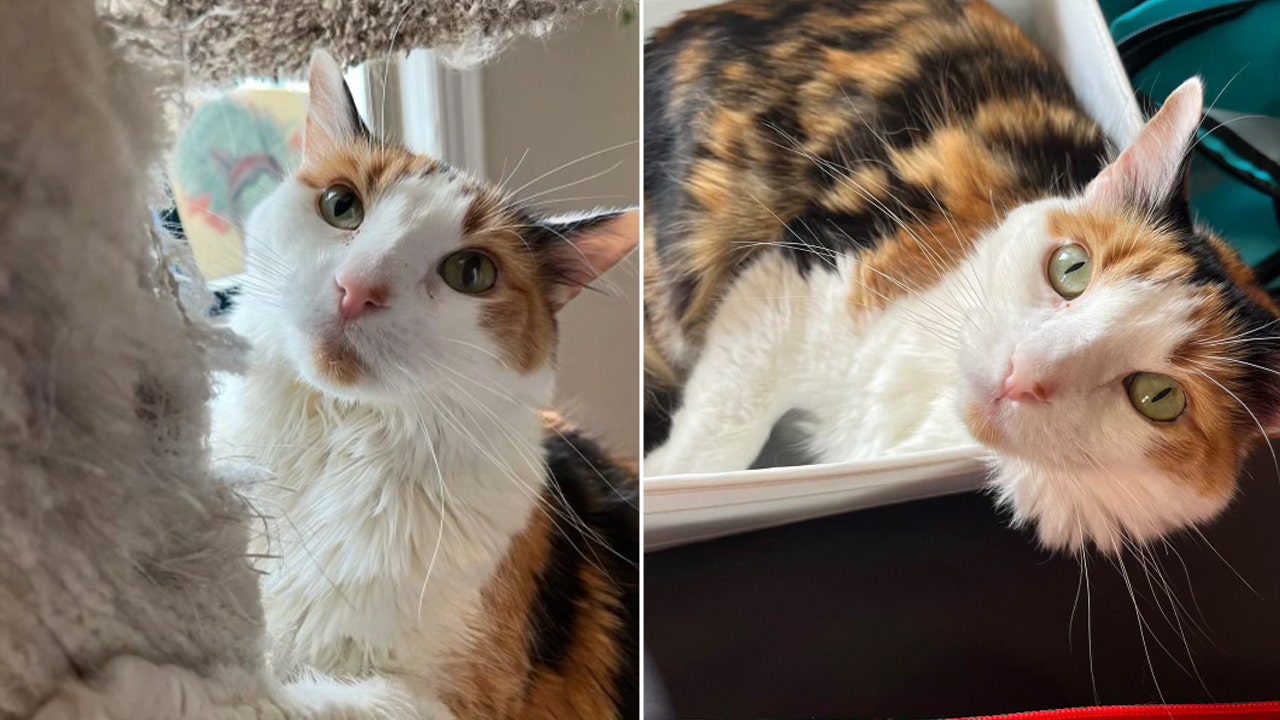
Many cat owners are rejoicing at the news that a drug used to treat an otherwise fatal illness for cats will be available in the United States as of June 1.
“Stokes Pharmacy has formed an exclusive partnership with the Bova Group to offer a U.S.-made compounded oral treatment for feline infectious peritonitis (FIP),” according to a statement from Stokes Pharmacy, a New Jersey-based compounding pharmacy.
Bova, a veterinary pharmaceuticals company based in the U.K. and Australia, began selling GS-441524, a drug compound to treat FIP, in 2021 — but the drug was not available for sale in the United States.
‘KITTENS’ DROPPED OFF AT ARIZONA HUMANE SOCIETY TURNED OUT TO BE SOMETHING ELSE
“This treatment is supported by Bova’s unique drug formula, which has been used in clinical research studies across the globe and is currently in use in the U.K. and Australia,” said Stokes.
Fox News Digital reached out to Stokes Pharmacy for further comment.
A drug that has been used in other countries to successfully treat FIP – an illness that kills cats unless treated – is now available in the United States. (iStock)
In a May 10 statement, the U.S. Food and Drug Administration (FDA) said there are “certain conditions where the agency does not intend to take enforcement actions for compounded products for use in animals,” and that the drugs are still not technically FDA-approved.
FIP is a “viral disease of cats caused by certain strains of a virus called the feline coronavirus,” according to the website for Cornell University’s Feline Health Center.
‘DEEPLY DEPRESSED’ MARYLAND SHELTER CAT GOES VIRAL AFTER ADOPTION PLEA
While most feline coronaviruses are relatively harmless and resolve on their own, the virus sometimes mutates into what is known as FIP.
“Once a cat develops clinical FIP, the disease is usually progressive and almost always fatal,” the Cornell website states.
Until now, U.S. cat owners have had to turn to the “black market” to obtain a drug that was not yet approved in this country.
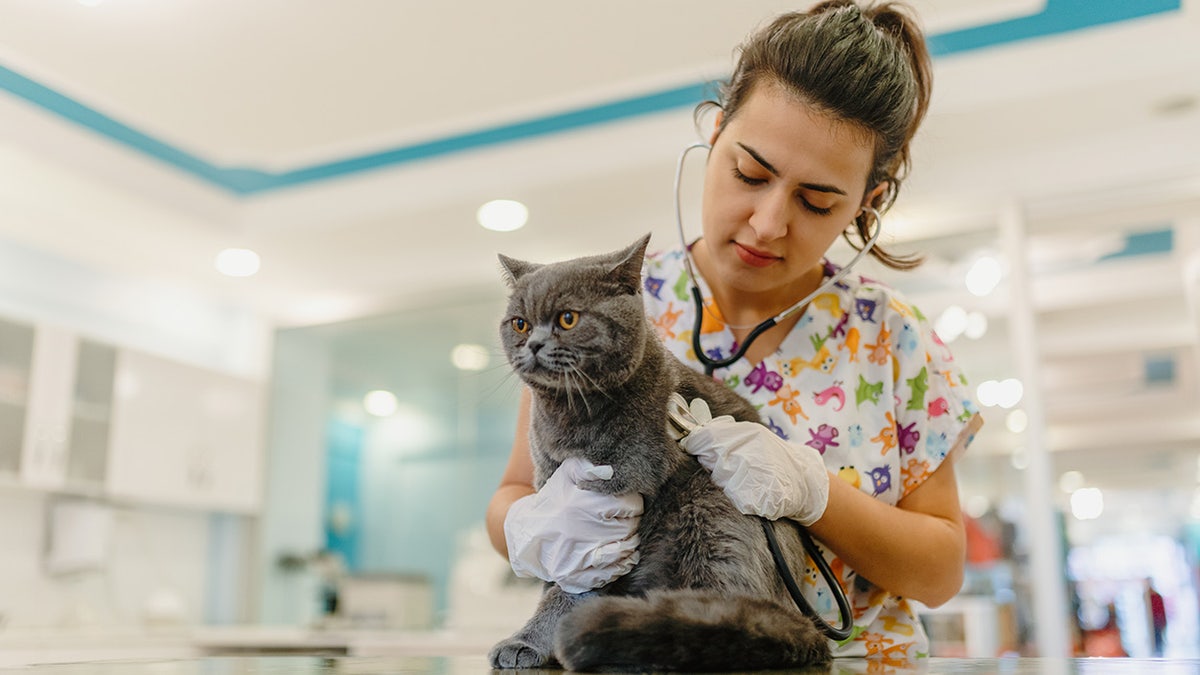
While most feline coronaviruses are relatively harmless and resolve on their own, the virus sometimes mutates into what is known as FIP. (iStock)
FIP Warriors, a group founded in March 2019 that helps connect cat owners with medications needed to treat their cats, told Fox News Digital that they are “cautiously optimistic” at the news that veterinarians will be able to prescribe treatment for cats with FIP.
Still, the group noted, “We have very little factual information at this time and eagerly await more details from Bova and Stokes to become available. We are in direct contact with Bova and will be sharing all updates we receive with the entire FIP Warriors community.”
CAT ADOPTION AD GOES VIRAL FOR ITS REFRESHING HONESTY: ‘SHE WILL OWN YOU, YOUR HOUSE, YOUR BELONGINGS’
“Our sincere hope is that a safe, affordable and easily accessible medication option will help treat and cure as many FIP cats as possible and that this is a positive first step toward that goal,” the group added.
“We will continue our diligent work to educate both veterinarians and cat parents as the FIP landscape evolves.”
“Within 48 hours, I could see that my cat was starting to feel better, and within a week she was back to normal.”
One of the cat owners helped by the FIP Warriors organization told Fox News Digital about what she went through to save her cat.
Jessica Guyette, a resident of Washington, D.C., told Fox News Digital that she returned home from a trip to discover that one of her two cats had lost a significant amount of weight and was acting strangely.

Jessica Guyette of Washington, D.C., successfully treated her cat’s FIP with a drug regimen not yet legal in the United States. Above is her cat, pictured while sick, left, and after she was cured, right. (Jessica Guyette)
After several vet visits, Guyette was informed that her cat had FIP — and that there was nothing legally that could be done.
A veterinarian “secretly suggested” that she turn to online groups to acquire the drugs that might save her cat, which is what led her to FIP Warriors.
“At this point, there were no other options,” she said. “She was still losing weight, very lethargic, and I could tell that she was dying.”
NEW YORK CAT RESCUED FROM HOARDING SITUATION IS NOW AVAILABLE FOR ADOPTION
Guyette, who works as a researcher for the National Institutes of Health, said she and her cat saw quick results.
“Within 48 hours, I could see that my cat was starting to feel better, and within a week she was back to normal,” she said — describing the overall experience of trying to save her as “terrifying.”
She added, “I brought her in [to the vet] every month to run blood tests and the vet was astonished to find that she was back to normal, when she had been on the brink of death.”

Hannah Shaw, known on YouTube as the “Kitten Lady,” runs a nonprofit to rescue kittens and to educate others on how to care for vulnerable kittens. (Andrew Marttila)
Activist and author Hannah Shaw, founder of the nonprofit organization Kitten Lady, also treated her own cat, Coco, for FIP using black market drugs and documented the process on her YouTube channel, “Kitten Lady.”
“It is a huge triumph that FIP — which has been considered a fatal disease for so long — is now able to be legally treated by veterinarians,” the California-based Shaw told Fox News Digital via email.
“This moment is the culmination of years of research, advocacy and activism from a movement that is sick of seeing cats die due to lacking access to lifesaving treatment.”
Shaw’s latest book, “Cats of the World,” will be released in October.
In the past, when veterinarians were told to “remain hands-off” when advising cat owners about treating FIP, it was “confusing and isolating for people who discover that their cats have been diagnosed with the disease,” she said.
Even more frustrating, said Shaw, was how “animal advocates have been successfully treating cats for FIP for a number of years, but navigating that care has been incredibly complicated for the average cat guardian.”
Coco, one of Shaw’s cats, developed FIP while undergoing chemotherapy, she told Fox News Digital.
It was only due to “total strangers on the internet” that Shaw was able to obtain the medication and successfully treat Coco, she said.
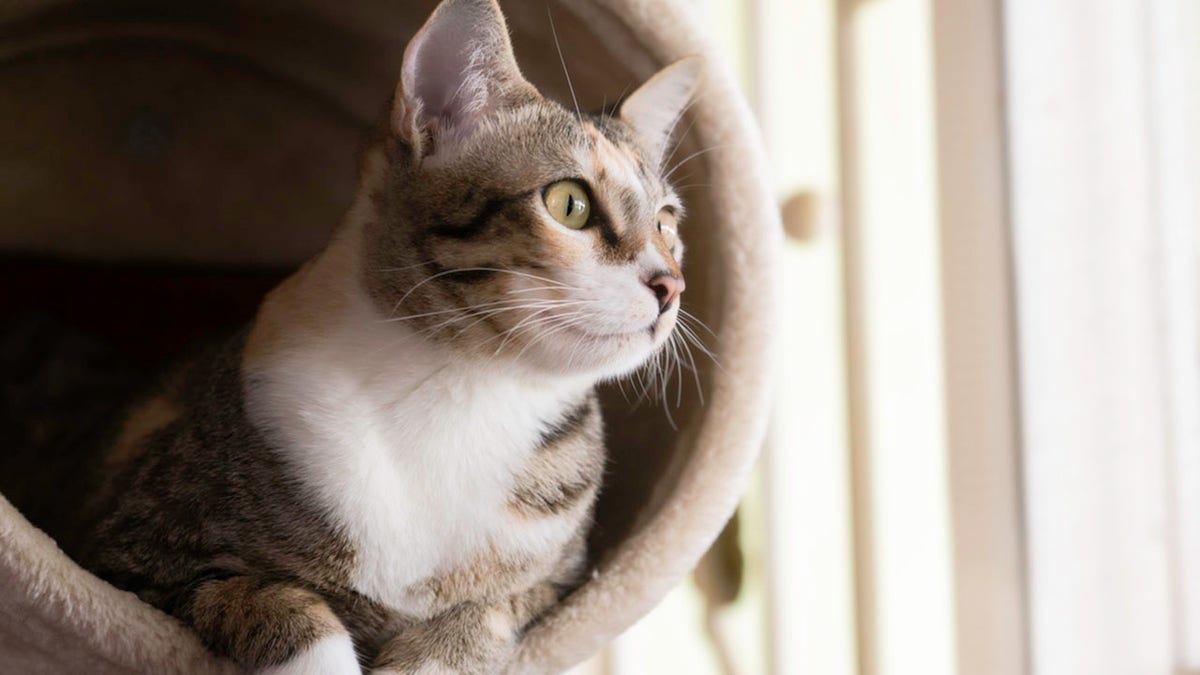
“It is a huge triumph that FIP — which has been considered a fatal disease for so long — is now able to be legally treated by veterinarians,” an activist told Fox News Digital. (iStock)
“GS-441524 completely cured her of FIP, and thanks to the drug, I got another amazing two years with her,” she said.
The ability for veterinarians to discuss FIP treatment with cat owners and for the drugs to be obtained through legal means is a “massive win,” Shaw said, “and is going to help so many people save their cats’ lives.”
“This moment is the culmination of years of research, advocacy and activism from a movement that is sick of seeing cats die due to lacking access to lifesaving treatment, and it’s a huge cause for celebration,” she added.
For more Lifestyle articles, visit www.foxnews.com/lifestyle.
-

 Politics1 week ago
Politics1 week agoHouse Dems seeking re-election seemingly reverse course, call on Biden to 'bring order to the southern border'
-

 World1 week ago
World1 week agoStand-in Jose Raul Mulino wins Panama presidential race
-

 News1 week ago
News1 week agoCompass Direct LLC’s 2024 Registration in North Carolina
-
News1 week ago
UCLA to resume in-person classes after Gaza protest crackdown
-

 World1 week ago
World1 week agoTech compliance reports, Newsletter
-

 News1 week ago
News1 week agoColumbia University cancels its main commencement ceremony after weeks of turmoil
-

 News1 week ago
News1 week agoMan, 75, confesses to killing wife in hospital because he couldn’t afford her care, court documents say
-

 World1 week ago
World1 week agoPentagon chief confirms US pause on weapons shipment to Israel
/cdn.vox-cdn.com/uploads/chorus_asset/file/25450390/videoframe_33450.png)

